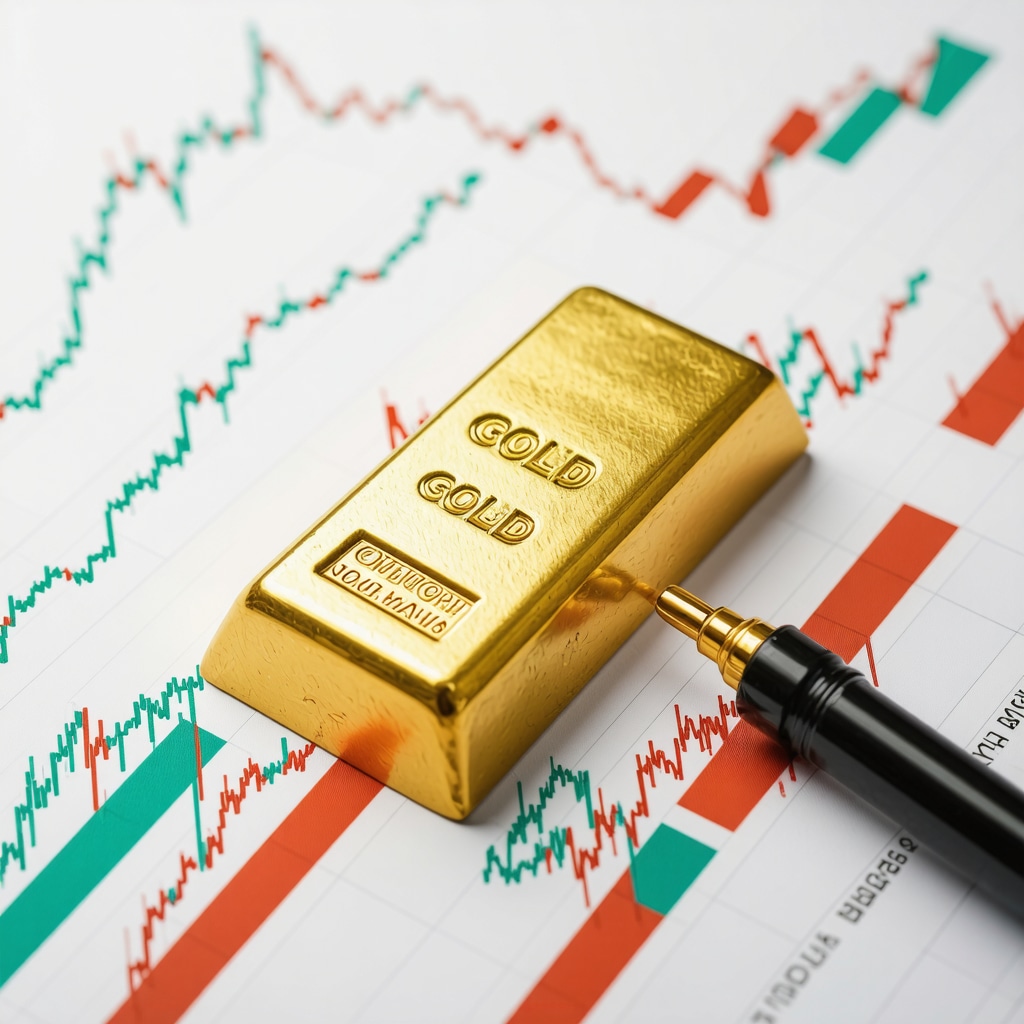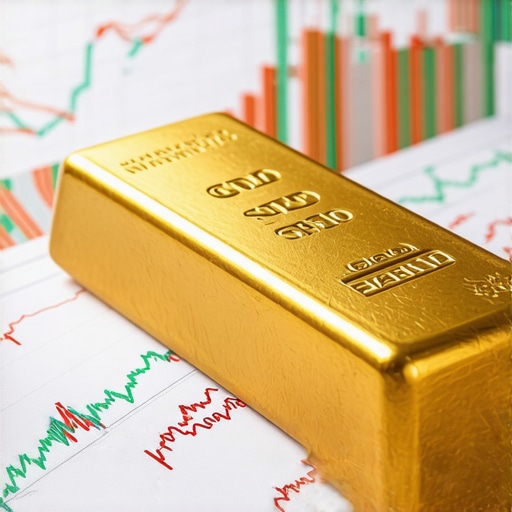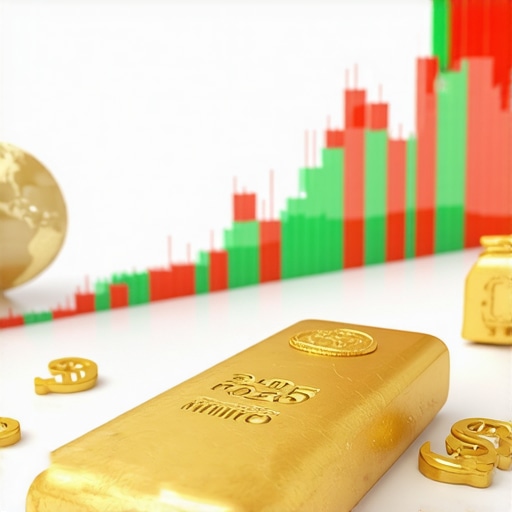How I Learned the True Power of Gold Supply and Demand
Early in my investing journey, I remember being fascinated by gold’s shimmering allure but feeling lost about what truly drives its price. It wasn’t until I dove deep into understanding gold supply and demand dynamics that my approach to investing became smarter and more grounded. This personal discovery transformed my strategy and helped me navigate the complexities of gold markets with newfound confidence.
Unpacking the Intricacies of Gold Demand in My Portfolio
One of the most eye-opening lessons was realizing how diverse gold demand really is. Beyond just investor buying, factors like jewelry demand, industrial use, and central bank purchases significantly influence gold’s price. For example, when central banks ramp up their gold reserves, it signals tightening supply and rising demand, often pushing prices higher. The World Gold Council provides detailed data on these trends, which I frequently consult to stay ahead of market shifts.
What Are the Key Drivers Behind Gold Supply Constraints?
On the supply side, I learned that gold mining output can be surprisingly inelastic. Mining operations face long lead times, regulatory hurdles, and fluctuating production costs, all of which limit how quickly supply can respond to price changes. This rigid supply structure often causes prices to react sharply to demand shocks. Understanding this helped me anticipate price reactions during times of geopolitical unrest or economic uncertainty.
Why Balancing Supply and Demand Insights Matters to Me
Incorporating these supply and demand insights into my investment decisions has allowed me to craft a more resilient gold portfolio. For instance, during periods when demand spikes due to inflation fears or currency volatility, I adjust my holdings accordingly. This approach is echoed in strategies outlined on BuyingGoldNow.com, where smart gold investment techniques emphasize the importance of understanding market fundamentals.
Reflecting on My Gold Investment Journey and What You Can Do Next
Gold’s supply and demand story is constantly evolving, shaped by global economic events and shifting investor sentiment. My journey taught me that staying informed and adaptable is key to smarter investing. If you’re curious about how these dynamics could impact your own gold investments, I invite you to share your experiences or questions in the comments below. Engaging with a community can enrich your perspective and help you make more confident decisions.
Exploring the Impact of Geopolitical Events on Gold Market Dynamics
Building on my understanding of gold supply and demand, I found that geopolitical events play a pivotal role in shaping gold prices. Conflicts, trade tensions, and shifts in international relations can create uncertainty in financial markets, driving investors toward gold as a safe haven asset. For example, during periods of heightened geopolitical risk, demand for physical gold and gold-backed ETFs often surges, tightening available supply and elevating prices. This phenomenon underscores why staying attuned to global news is crucial for any serious gold investor aiming to anticipate market moves effectively.
How Can Investors Leverage Supply-Demand Fluctuations Amidst Market Volatility?
Understanding the interplay between supply constraints and demand spikes enables investors to time entries and exits more strategically. When supply is relatively inelastic due to mining limitations and regulatory delays, sudden demand increases—whether from central banks, investors fearing inflation, or industrial uses—can trigger sharp price rallies. Savvy investors monitor indicators like central bank gold purchases reported by the World Gold Council and inventory levels of gold ETFs to gauge market sentiment. Combining these insights with technical analysis can provide a comprehensive approach to navigating gold’s price volatility.
Integrating Gold Demand Trends with Portfolio Diversification Strategies
Another layer of sophistication in my investment approach involved aligning gold demand trends with broader portfolio diversification tactics. For instance, during inflationary cycles or currency depreciation phases, increasing gold exposure can act as a hedge against wealth erosion. However, balancing gold with other asset classes—such as stocks, bonds, and real estate—helps mitigate sector-specific risks. Resources like BuyingGoldNow.com’s guide on balancing gold with stocks offer practical advice on constructing a resilient, multi-asset portfolio that leverages gold’s unique properties without overconcentration.
Real-World Application: Monitoring Central Bank Behavior and Mining Output
Central banks remain among the largest players influencing gold supply and demand. Their purchasing patterns often reflect macroeconomic policy shifts and geopolitical strategies. By tracking central bank disclosures and mining industry reports, I can anticipate potential supply constraints or demand surges ahead of market reactions. Mining production data, subject to delays and operational risks, usually signals supply rigidity; thus, any unexpected production cuts or expansions can significantly impact price trends. This dual focus sharpens my forecasting accuracy and investment timing.
For those interested in diving deeper into effective gold investment techniques during uncertain times, I highly recommend exploring comprehensive strategies outlined on BuyingGoldNow.com. Their expert insights complement the nuanced understanding of supply-demand dynamics and provide actionable steps for portfolio enhancement.
When Market Sentiment Meets Gold’s Tangible Reality
One of the most nuanced aspects I encountered in my gold investment journey is how intangible market sentiment intertwines with the very tangible realities of gold supply and demand. It’s fascinating how investor psychology can amplify or mute price movements, sometimes overriding fundamentals temporarily. For instance, during certain crises, the rush to gold isn’t just about supply shortages but a collective flight to safety that can drive prices beyond what mining output or jewelry demand alone would justify. This interplay taught me to weigh both quantitative data and qualitative sentiment indicators before making investment moves.
How Do Changing Consumer Behaviors Influence Gold Demand in Modern Times?
Reflecting on the evolution of gold demand, I realized how shifts in consumer preferences deeply impact market dynamics. Younger generations, for example, show varying interest in gold jewelry compared to previous generations, influenced by cultural trends and alternative luxury goods. Moreover, technological advancements are changing industrial gold applications, sometimes reducing or increasing demand unpredictably. According to recent analyses by the World Gold Council, these changing consumption patterns can subtly yet persistently reshape demand curves. Staying attuned to these societal shifts has become essential in refining my investment timing and asset allocation.
What’s more, the rise of digital gold investment platforms and gold-backed cryptocurrencies introduces a new dimension of demand, often more volatile but intriguing in terms of accessibility and liquidity. I found that understanding these emerging demand channels helped me diversify my strategies beyond traditional physical gold holdings.
Balancing Patience and Agility: A Personal Reflection on Gold Investment Timing
Gold’s supply side, with its inherent rigidity, often rewards patient investors who can withstand short-term volatility. However, my experience showed that agility is equally crucial—being ready to capitalize on sudden demand spikes or geopolitical shocks. There’s a delicate balance between holding steady for long-term appreciation and tactically adjusting your position to protect gains or seize opportunities. This balancing act became clearer as I tracked central bank activities and mining output reports, using resources like BuyingGoldNow.com’s guidance to fine-tune my timing and hedging techniques.
Why Understanding Regulatory and Environmental Factors Adds Depth to Gold Supply Analysis
Another layer that enriched my perspective involves the regulatory and environmental constraints impacting gold mining. Increasingly strict environmental regulations, alongside social license challenges, can delay or limit new mine developments. These factors contribute to the inelasticity of supply, which means that even modest demand surges can have outsized price effects. For example, when a key mining region faces regulatory hurdles or labor strikes, the ripple effects can tighten global supply unexpectedly. Incorporating these less obvious but powerful influences into my analysis improved my ability to anticipate price volatility beyond mere production numbers.
Engaging with the Gold Investing Community: A Source of Collective Wisdom
Sharing these insights and hearing others’ experiences has been invaluable. The gold investing community, whether through forums, webinars, or comment sections on platforms like BuyingGoldNow.com, offers a rich tapestry of perspectives and strategies. I encourage you to join these conversations—your unique questions and discoveries can spark new understanding and foster smarter investments for all involved. Have you noticed particular demand trends or supply constraints shaping your gold decisions? I’d love to hear your stories and reflections.
Decoding the Subtle Signals in Central Bank Gold Buying Patterns
As my gold investment journey matured, I began to appreciate the complexity behind central bank gold acquisitions. These purchases are not merely about stockpiling a precious metal; they reflect broader macroeconomic strategies, currency reserve diversification, and geopolitical positioning. For instance, when a central bank subtly increases its gold reserves, it can signal diminished confidence in fiat currencies or impending monetary policy shifts. This nuanced understanding helped me anticipate market movements ahead of mainstream recognition. Tracking these patterns through authoritative resources like the BuyingGoldNow.com analysis on central bank gold buying has become an indispensable part of my strategy, enabling me to align my portfolio proactively rather than reactively.
How Do Emerging Technologies and ESG Considerations Reshape Gold Supply Dynamics?
One advanced facet that profoundly influenced my perspective is the intersection of emerging mining technologies with Environmental, Social, and Governance (ESG) frameworks. The push for sustainable mining practices often entails higher upfront costs, longer permitting processes, and stricter environmental impact assessments. Concurrently, innovative extraction methods—like bioleaching and automation—promise efficiency gains but require significant capital and time to scale. This evolving landscape creates a paradox: while technology could theoretically augment supply, regulatory and social constraints frequently limit immediate output expansion. Understanding this delicate balance has refined my forecasting models, especially during periods of demand spikes where supply elasticity remains stubbornly low.
Integrating Macro-Financial Indicators with Gold Market Strategies
Beyond direct supply-demand factors, I learned to weave macro-financial indicators into my gold market analysis tapestry. Variables such as real interest rates, inflation expectations, and currency strength interplay intricately with gold’s appeal as a hedge or safe haven. For example, a rising real interest rate environment typically suppresses gold’s allure, but geopolitical tensions or sudden liquidity crunches can override this trend temporarily. Incorporating these dimensions requires a dynamic, multi-layered analytical framework that I continuously fine-tune using insights from IMF working papers on gold in reserve portfolios, which provide rigorous empirical data on gold’s behavior amid varying macroeconomic cycles.
Mastering the Art of Portfolio Adjustment Amid Gold Market Volatility
Gold’s price volatility, while often seen as a risk, became for me a fertile ground for tactical portfolio adjustments. By monitoring supply chain disruptions, mining production updates, and shifts in industrial demand, I developed a disciplined approach to incrementally rebalance my holdings. This strategy is not about chasing every price movement but about leveraging informed patience coupled with timely agility. Resources like BuyingGoldNow.com’s guide on navigating market uncertainty have been instrumental in shaping these nuanced techniques, helping me avoid emotional pitfalls while capitalizing on structural market shifts.
Have you encountered moments where a subtle shift in gold supply or demand dynamics changed your investment outlook? I invite you to share your experiences or advanced questions below. Engaging in this dialogue not only enriches our collective understanding but also sharpens our ability to anticipate and respond to gold market complexities with confidence.
Things I Wish I Knew Earlier (or You Might Find Surprising)
The Invisible Tug of Central Banks
Early on, I underestimated just how much central banks quietly shape gold’s supply and demand balance. Their strategic buying isn’t always headline news, but when they adjust reserves, it can ripple through the market in unexpected ways. Now, I pay close attention to their moves, often through detailed analyses like those on BuyingGoldNow.com, and it’s become a cornerstone of my timing strategy.
Supply Isn’t as Flexible as You Think
It was surprising to learn how rigid gold mining supply really is. Unlike many commodities, gold can’t suddenly flood the market when prices rise. Regulatory hurdles, environmental concerns, and lengthy project timelines mean supply lags demand shifts. This inelasticity means prices can spike sharply during sudden demand surges—something I now anticipate rather than react to.
Market Sentiment Can Outpace Fundamentals
One of the trickiest lessons was recognizing when market psychology drives gold prices beyond what supply and demand alone would suggest. During crises, fear can amplify demand, pushing prices higher even if mining output or industrial demand remains steady. This taught me to blend quantitative data with sentiment indicators, avoiding knee-jerk reactions but still capitalizing on market momentum.
Changing Consumer Preferences Matter More Than You’d Guess
Gold demand isn’t static. I was surprised by how shifts in jewelry preferences, especially among younger generations, and emerging digital gold investments subtly reshape demand trends. Keeping an eye on these evolving consumer behaviors, with resources from the World Gold Council, helps me refine my investment timing and diversify beyond traditional holdings.
ESG and Tech Are a Double-Edged Sword
The intersection of environmental regulations and new mining technologies creates a paradox. While innovations promise more efficient gold extraction, stricter ESG standards often slow supply growth. This complexity was eye-opening and made me appreciate the nuanced challenges miners face, which in turn affect supply forecasts and price volatility.
Resources I’ve Come to Trust Over Time
BuyingGoldNow.com – Their in-depth articles on effective gold investment strategies and central bank gold buying have been invaluable for understanding market drivers and crafting adaptable strategies.
World Gold Council – The go-to source for reliable data on global gold demand trends. Their reports helped me grasp the nuances behind jewelry, industrial use, and investment demand shifts.
International Monetary Fund (IMF) – Their working papers, like those on gold in reserve portfolios, offer a solid macro-financial perspective that deepened my understanding of gold’s role amid economic cycles.
Gold Investing Communities – Whether forums or comment sections on platforms like BuyingGoldNow.com, engaging with fellow investors has broadened my insights and exposed me to diverse strategies and real-world experiences.
Parting Thoughts from My Perspective
Reflecting on my journey exploring gold supply and demand has been a reminder that gold investing isn’t just about numbers—it’s a dynamic blend of economics, psychology, and global events. Understanding the delicate balance between rigid supply constraints and shifting demand drivers has transformed how I approach gold as part of a diversified portfolio. Gold’s unique ability to hedge against uncertainty makes it a powerful asset, but success requires staying informed, patient, and adaptable.
If these reflections resonate with you or spark new questions, I’d love to hear your thoughts. Sharing experiences helps us all navigate the fascinating world of gold investing with greater confidence and insight.











Reading about the inelasticity of gold supply really resonated with my own experience in precious metals investing. Early on, I underestimated how much regulatory hurdles and lengthy mining timelines could limit supply responsiveness. This rigid structure means that spikes in demand, especially those driven by geopolitical tensions or central bank moves, often lead to sharper price volatility than I expected. I also appreciate the post’s point about the diverse sources of demand—from jewelry to industrial use to investment—highlighting how shifts in any of these areas can ripple through the market. In my portfolio, I’ve found closely tracking central bank gold reserve disclosures via reliable sources like the World Gold Council essential for timing my investments better. However, what still challenges me is balancing patience with agility: knowing when to hold steady through volatility versus when to capitalize on sudden demand surges. How do others navigate this balance, especially when market sentiment often drives prices beyond fundamentals temporarily? Are there specific indicators or signals you rely on to decide when to adjust holdings promptly without falling prey to emotional trading? I’d love to hear different strategies from fellow investors managing these complexities.